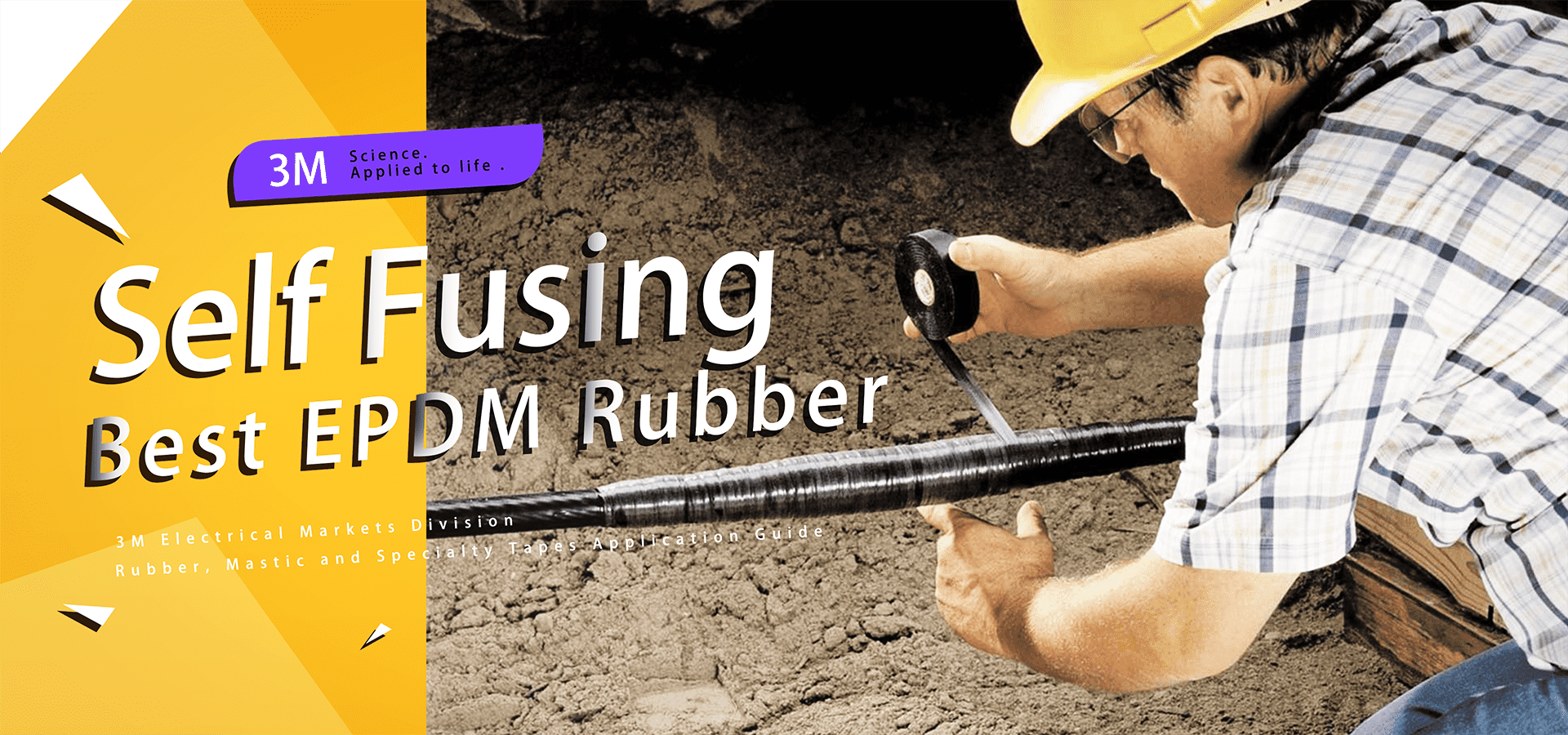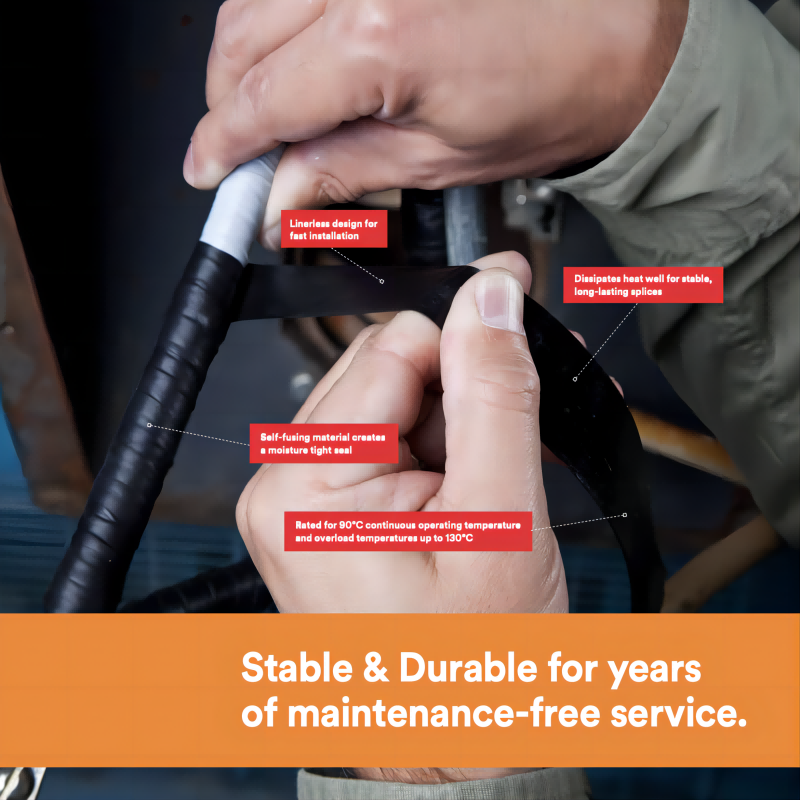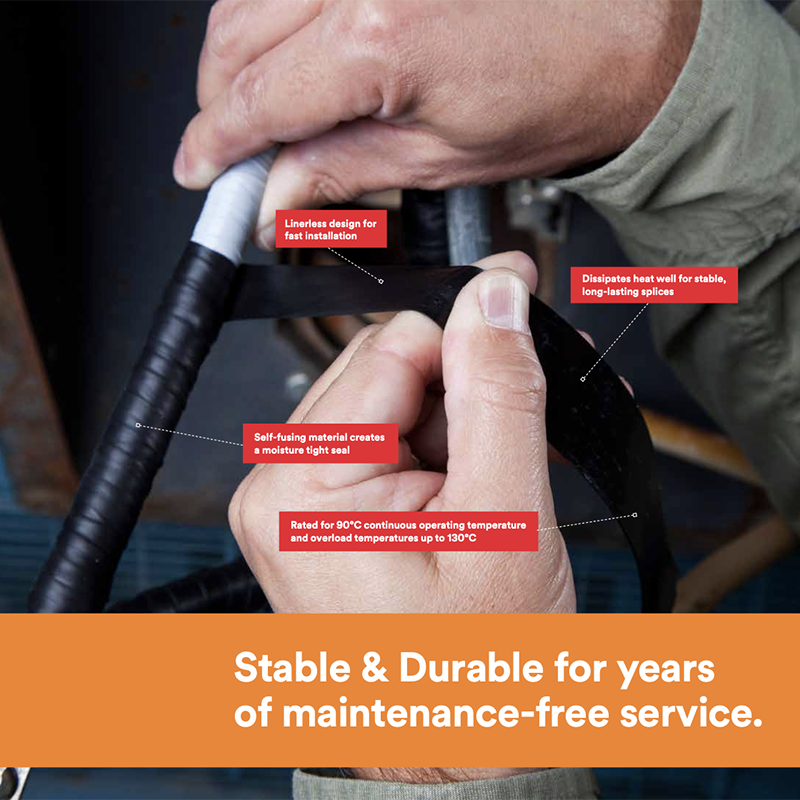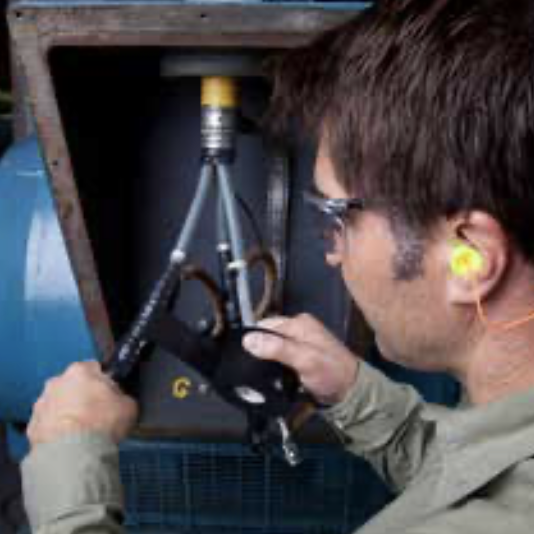
• Primary insulation for splicing all types of solid dielectric insulated cables through 69 kV
• Primary insulation for building stress cones on all types of solid dielectric insulated cables up to 35 kV
• Jacketing (secondary insulation) on high-voltage splices and terminations
• Moisture-sealing electrical connections
• Bus bar insulation
• End-sealing high-voltage cables
• Motor leads
• Jacket repairs



Frequently Asked Questions
Scotch® Linerless Rubber Splicing Tape 130C
1 of 1
Question: At what temperature above the temperature listed on the data sheet would the
Scotch® Linerless Rubber Splicing Tape 130C fail?
Answer: Since we don not test tapes at temperatures above those listed in the test standa
rds, we do not have any data to answer this question.
Question: Is Scotch Linerless Rubber Splicing Tape 130C oil-resistant?
Answer: No
Question: Is there any reason the Scotch Linerless Rubber Splicing Tape 130C could not
be installed with the stick side down? What are the effects of installing Scotch Linerless
Rubber Splicing Tape 130C with the stick side in?
Answer: The adhesive is on the tape to prevent it from bonding into a solid mass on the
roll. When it is applied with the adhesive side out, the process of stretching the tape as it
is applied breaks up the adhesive so that the tape can properly bond to itself. Applied
adhesive side down, it may not bond to itself properly.
Question: Is the Scotch Linerless Rubber Splicing Tape 130C flame retardant?
Answer: No
Question: Since Scotch Linerless Rubber Splicing Tape 130C is not flame retardant why
does the packaging state that it is as defined by IEEE std 27-1974?
Answer: This is an obsolete standard that should no longer be used. It is being removed
from the packaging.
Question: Will Scotch Linerless Rubber Splicing Tape 130C withstand UV
Exposure?
Answer: We always recommend that any of the EPDM rubber tapes be overwrapped
with a vinyl tape to give it UV resistance as well as mechanical protection. The rubber
tapes will break down over time when they are exposed to UV.
Question: When was the Scotch Linerless Rubber Splicing Tape 130C originally
released?
Answer: 1978
Some real reality from customer:
1.Javid Akhundov
Give 4 stars review, Sorbothane’s Cousin. Reviewed in USA on June 05
The product arrived without any physical damage or cosmetic imperfectoins.
I wanted to use this kind of tape for the modification of the mechanical keyboard. It works as good as a masking tape, but gives better results in sound signature department (if you are more into low frequency/silent sound). Since it has nearly the same thickness as hotswappable sockets, it can create quite a pressure, if you use it with a thick foam on the bottom case.
The non-sticky side of this tape is sticky and the grip is pretty much the same as a masking tape. You can pull it from the foam/other material easily, but sometimes, it can be challenging to do.
It can be a bit hard to work with, if you want to cut some forms or holes in it. Artist's knife doesn't even make a scratch on it, so the only thing that works fine is a pair of sharp scissors.
It doesn't have a rubber smell, even though it has rubbery components in it and it is quite sturdy.
2.Big Giant Head
Give 5 stars review, It’s expensive tape, and wortj it… Reviewed in USA on September 01
Like good gaffers tape, 33+ electrical tape and VHB tape, the linerless rubber stretch tape, it’s expensive. However we cannot live without it....
3.Second Wind
Give 5 stars review. Works perfectly. Reviewed in USA on April 10
I'm using this not as electrical splicing tape, but as a substitute for self-fusing silicone rubber tape. It needs to be very flexible, weather resistant, and waterproof for patching leaks and joints in low pressure tubing. I apply it sticky side down, the opposite of the instructions on the box. Works well for this purpose.
4.Damiano Pollastrini
Give 5 stars review. Very useful tape. Reviewed in Italy on September 18.
Very useful tape especially because it is self agglomerating. I used it to weld electrical cables in an area where there's a lot of moisture.
Report
